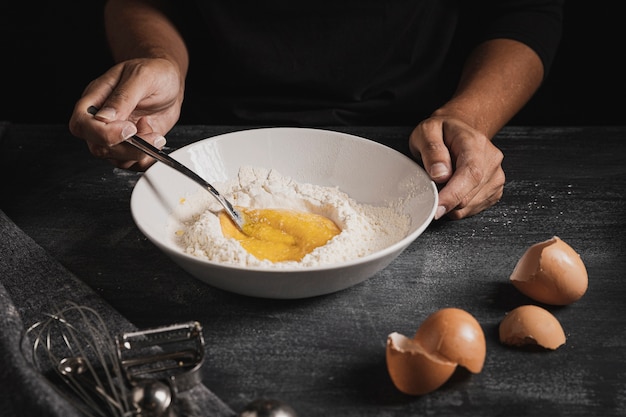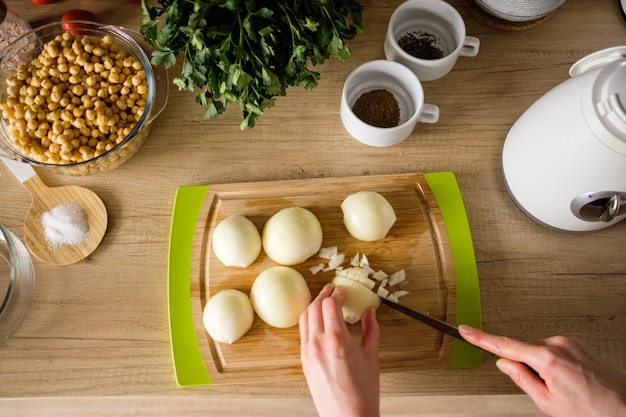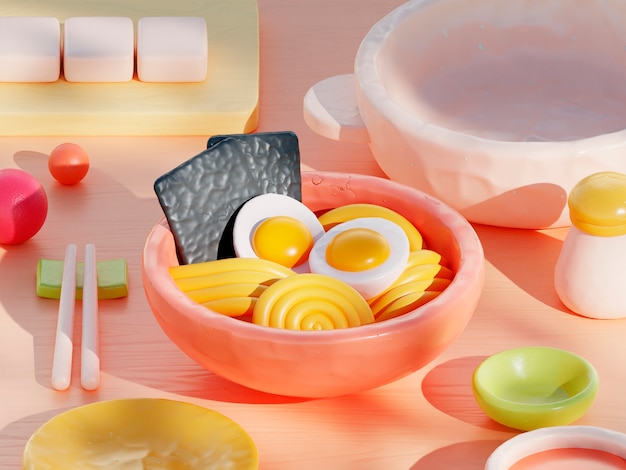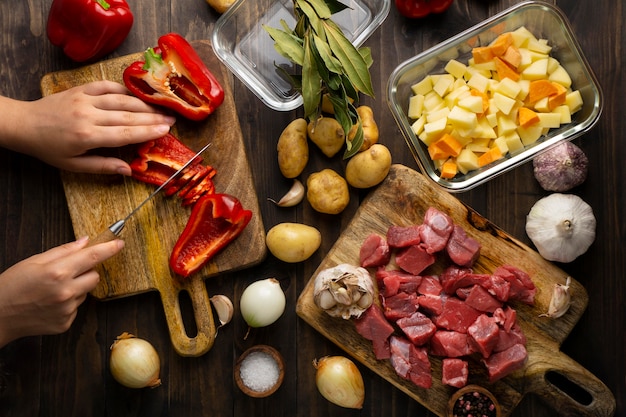Ah, ramen. A symphony of flavors, a comforting bowl of slurp-worthy goodness. But you know what takes it to the next level? The perfect soft-boiled egg. Not just any egg, mind you, but one with a silky, runny yolk that melts in your mouth and a tender, just-set white that adds a whole new dimension of texture. It's the kind of egg you see in those drool-worthy ramen pictures, the one that makes you say, "I need that in my life."
I've been on a quest to master the perfect soft-boiled egg for years. From those first attempts (let's just say they weren't pretty), to the gradual understanding of the science behind it, it's been a journey of culinary discovery. And let me tell you, it's a journey worth taking.
So, whether you're a ramen enthusiast, a seasoned cook, or just starting out in the kitchen, this is your guide to unlocking the secrets of the perfect soft-boiled egg.
(Part 1) The Science of the Soft-Boiled Egg

Let's break down the magic behind this seemingly simple culinary feat. You see, the art of the perfect soft-boiled egg is all about understanding the delicate dance between heat and protein.
The Heat and the Egg - A Protein Transformation
Think of a raw egg as a tiny world of proteins neatly packed together. When you apply heat, those proteins start to unravel and rearrange themselves, forming new bonds. This process is what creates the solid texture of the cooked egg. But the key is to stop this transformation at the precise moment when the white has set but the yolk remains luxuriously runny.
The Doneness Spectrum - A Guide to Your Perfect Egg
The level of doneness is all about how much time you allow the proteins to rearrange. From a barely set, runny yolk to a jammy, almost-set yolk, there's a range of soft-boiled perfection out there, waiting to be discovered.
Here's a little visual guide to help you navigate the spectrum of doneness:
| Level of Doneness | cooking time (Large Egg at Room Temperature) | Visual Description |
|---|---|---|
| Very Runny | 2-3 minutes | Yolk completely liquid, white very tender |
| Runny | 3-4 minutes | Yolk runny but slightly thicker, white more set |
| Jammy | 4-5 minutes | Yolk slightly set, but still creamy, white set |
| Slightly Set | 5-6 minutes | Yolk starting to solidify, white fully set |
| Fully Set | 6+ minutes | Yolk fully solid, white firm |
This is just a starting point, of course. The freshness of your eggs, their size, and even your individual preferences will all influence the perfect cooking time. But understanding the basics will help you adjust accordingly.
(Part 2) The Equipment - Your Kitchen Arsenal

You can't conquer the perfect soft-boiled egg without the right tools. Let's assemble your culinary arsenal.
1. The Pot - Finding the Right Size
A medium-sized saucepan is your best friend here. It needs to be big enough to hold your eggs comfortably without overcrowding, allowing them to cook evenly. I usually prefer a saucepan with a lid for better temperature control, ensuring the eggs stay submerged in the water.
2. The ice bath - The Shock Treatment
This is where the magic happens. A large bowl filled with ice water. This is your trusty sidekick, the shock trooper that instantly halts the cooking process, preventing the yolk from overcooking and ensuring that perfect soft-boiled texture.
3. The Slotted Spoon - A Gentle Touch
A slotted spoon is essential for retrieving the eggs from the boiling water without breaking them. A gentle touch is key here, so your eggs stay intact and beautiful.
4. The Timer - Keep an Eye on the Clock
A reliable timer is your ally in this precise operation. You need to be accurate with the cooking time. A few extra seconds can mean the difference between a perfectly runny yolk and a slightly firmer, less desirable result.
(Part 3) The Perfect Egg - A Step-by-Step Guide

Now, for the moment you've been waiting for - the step-by-step guide to creating your own soft-boiled masterpiece.
1. Egg-ceptional Preparation - Setting the Stage
The first step is crucial. Bring your eggs to room temperature. Cold eggs are more likely to crack when plunged into boiling water. So, take them out of the fridge about 30 minutes before you start cooking.
Next, fill your pot with enough water to comfortably cover the eggs by at least an inch or two.
2. The Gentle Boil - A Simmering Start
Bring the water to a gentle boil over medium heat. We don't want a full, roaring boil, as that can be too harsh on the eggs. The aim is a simmering boil, with tiny bubbles rising to the surface.
3. The Egg Drop - A Gentle Descent
Once the water is simmering, carefully lower the eggs into the pot. I find using a spoon to gently guide them in helps prevent any accidental cracking.
4. The Timing is Key - Precision is Paramount
This is the crucial moment. Set your timer and stick to the cooking time based on your desired level of doneness. Remember, this is a delicate dance, and those few seconds can make a big difference.
5. The Ice Bath Plunge - Cooling Down Quickly
As soon as the timer goes off, immediately remove the eggs from the pot using your trusty slotted spoon and gently place them into the ice bath. Leave them submerged for 5-10 minutes. This is the key to stopping the cooking process and ensuring that gorgeous soft-boiled texture.
6. The Big Reveal - Shedding the Shell
After the ice bath, gently remove the eggs from the cold water. Give them a gentle tap on a hard surface to crack the shell.
7. The Final Touch - Peeling and Presentation
Now, you have two options:
- The Classic Peel: Carefully peel off the shell, revealing the beautiful soft-boiled egg underneath.
- The Japanese Style: This is where the presentation gets artistic. Gently crack the shell around the middle and carefully remove the top half. This creates a beautiful egg, ready for dipping in your ramen broth.
(Part 4) Tips and Tricks - Mastering the Ramen Egg
You've got the basics, but now let's sprinkle in some insider knowledge to elevate your soft-boiled egg game.
1. Freshness Matters - The Egg-ceptional Ingredient
Freshness plays a role in the perfect soft-boiled egg. Older eggs tend to have weaker yolks, which can make them more likely to crack during cooking. So, opt for eggs that are as fresh as possible for the best results.
2. The Salt Trick - A Little Help for Your Eggs
Adding a teaspoon of salt to the boiling water is a time-honored trick. It helps prevent the eggs from cracking, raising the boiling point of the water slightly and strengthening the egg whites.
3. No Overcooking Allowed - A Timely Stop
Remember, the cooking process doesn't stop the moment you remove the eggs from the heat. They continue to cook even after you transfer them to the ice bath. That's why a swift ice bath is essential.
4. Practice Makes Perfect - Embrace the Learning Curve
Just like anything in cooking, practice makes perfect. Don't be afraid to experiment with different cooking times and techniques. You'll find what works best for your taste and preference.
(Part 5) Flavouring the Ramen Egg - A Symphony of Flavors
The perfect soft-boiled egg is a blank canvas, ready to be painted with your favorite flavors. Let's explore some delicious possibilities to complement your ramen.
1. The Classic Soy Sauce Marinade - A Timeless Favorite
This is the ultimate ramen egg flavor. Simply submerge your peeled soft-boiled egg in a mixture of soy sauce, mirin, and a pinch of sugar. The result? A sweet and savory explosion of flavor that perfectly complements the ramen broth.
2. The Spicy Kick - Adding a Touch of Heat
For those who like their ramen with a fiery punch, add some chili oil or gochujang to your soy sauce marinade. The chili adds a welcome heat that elevates the flavor profile of the egg and your entire ramen dish.
3. The Umami Bomb - A Depth of Flavor
Want to take your ramen egg to the next level of complexity? Try adding some dashi, a Japanese fish and seaweed broth, to your soy sauce marinade. Dashi adds a rich, savory depth of flavor that will have you coming back for more.
4. The Creative Touch - Express Your Flavour
Don't be afraid to experiment. Add chopped green onions, sesame seeds, a pinch of black pepper, or any other flavor you love to your marinade. The world is your oyster, or should I say, your egg.
(Part 6) The Art of the Presentation - A Visual Feast
Just like the flavors, the presentation of your ramen egg is essential. You want to make it as visually appealing as it is delicious.
1. The Japanese Style - A Classic Presentation
This is the quintessential ramen egg presentation. Crack the top half of the shell off the egg, leaving the bottom half intact. It creates a beautiful, egg-shaped shell that acts as a vessel for the creamy yolk.
2. The Sliced and Diced - A Casual Approach
For a more casual presentation, simply slice or dice your soft-boiled egg and add it to your ramen bowl. This is a great way to evenly distribute the egg throughout your ramen.
3. The Artistic Touch - Express Yourself
Get creative with your presentation. Arrange the egg in your bowl to create swirls, patterns, or interesting visual elements. Top it with a sprinkle of chili flakes, sesame seeds, or any other garnishes that enhance the visual appeal.
(Part 7) Variations on a Theme - Beyond the Basics
Now that you've mastered the basics, let's explore some variations that add new dimensions to your soft-boiled egg repertoire.
1. The marbled egg - A Visual Delight
Want to add a touch of visual flair to your egg? Add a small amount of soy sauce or your soy sauce mixture to the boiling water before adding the eggs. This creates a beautiful marbling effect in the egg white.
2. The ajitsuke tamago - A Richer, More Intense Flavor
This is a more involved method, but the results are worth the effort. Marinate the egg in a mixture of soy sauce, mirin, and sake for a longer period of time. This gives the egg a richer, more complex flavor and a more vibrant color.
3. The Sous Vide Egg - Precision Cooking
For the ultimate in precision, consider using a sous vide bath to cook your eggs. This method allows you to control the temperature with incredible accuracy, resulting in a perfectly cooked egg every time.
(Part 8) FAQs - The Ultimate Soft-Boiled Egg Guide
You've got questions, I've got answers. Let's address some of the common inquiries about soft-boiled egg perfection.
1. Why is my egg white rubbery?
This usually happens when the egg is overcooked. Try reducing the cooking time by a few seconds or make sure you're not overcooking it in the ice bath.
2. What happens if my egg cracks while cooking?
Don't panic! If the egg cracks, it's best to remove it from the water immediately and discard it. You don't want any shell bits in your ramen.
3. What can I do if my egg yolk is still runny after the ice bath?
Sometimes, the yolk might still be a bit too runny, even after the ice bath. This is often due to a lack of heat. Try adding a few more seconds to your cooking time next time.
4. How long can I keep a marinated soft-boiled egg?
You can store a marinated soft-boiled egg in the refrigerator for up to 3 days. Just make sure to keep it in an airtight container.
5. Can I freeze a soft-boiled egg?
It's not recommended to freeze a soft-boiled egg. Freezing can change the texture and flavor.
There you have it – your complete guide to mastering the perfect soft-boiled egg. Now you can take your ramen to a whole new level of deliciousness. So, grab your eggs, get your cooking gear ready, and let the ramen adventure begin!
Everyone is watching

Perfect Rice Every Time: The Ultimate Guide to Cooking Rice
Cooking TipsAs a self-proclaimed foodie, I've always been a bit obsessed with rice. It's the foundation of countless cuisi...

Ultimate Guide to Cooking the Perfect Thanksgiving Turkey
Cooking TipsThanksgiving. Just the word conjures up images of overflowing tables laden with delicious food, the scent of r...

The Ultimate Guide to Cooking Asparagus: Tips, Techniques, and Recipes
Cooking TipsAsparagus. The mere mention of this spring delicacy conjures up images of vibrant green spears, crisp and burs...

Can You Cook Spaghetti with Gasoline? (The Shocking Truth)
Cooking TipsWe've all seen those crazy internet trends. You know, the ones that make you wonder, "Did someone actually try...

Chorizo and Eggs Recipe: The Ultimate Guide
Cooking TipsRight, let’s talk about chorizo and eggs. You know, that classic Spanish dish that's always a winner. It's th...
